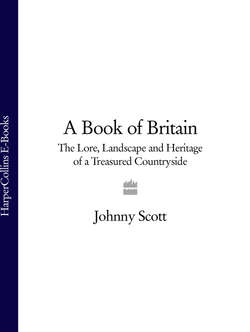Читать книгу A Book of Britain: The Lore, Landscape and Heritage of a Treasured Countryside - Johnny Scott - Страница 23
THE BIRTH OF NEW BREEDS
ОглавлениеWith improved feeding, livestock were growing better carcase qualities, but Robert Bakewell from Derbyshire experimented with selective breeding to standardise the best characteristic, within a breed. He started with the old Lincolnshire breed of sheep that he turned into the New Leicester. These sheep were big and delicately boned and had good-quality fleece and fatty forequarters, in keeping with the popular taste for fatty shoulder mutton. He also began the practice of hiring out his prize rams to farmers to improve their own stock.
One of the many advantages of the new communication system of roads and canals was the opportunity for farmers to exchange quality livestock amongst each other. These sheep were exported widely, including to Australia and North America, and have contributed to numerous modern breeds, despite that fact that they fell quickly out of favour as market preferences in meat and textiles changed. Bloodlines of these original New Leicesters survive today as the English Leicester, or Leicester Longwool, which is primarily kept for wool production.
Robert Bakewell was also the first to breed cows primarily for beef. Previously, cattle were first and foremost kept for pulling ploughs as oxen. Bakewell had noticed that the Longhorn breed appeared to be the most efficient meat producers; they ate less and put on more weight than any other breed. As with the sheep, he began breeding in-and-in to enhance their characteristics and enable him to ‘grow’ a better carcass more efficiently. By the time he had finished, his cattle were fat, meaty and had doubled in carcass weight, and as more and more farmers followed his lead, farm animals increased dramatically in size and quality.
John Ellman then produced the stocky Sussex sheep, noted for its carcass and meat quality, which were soon being bought by improvers across Britain and exported to Russia.
